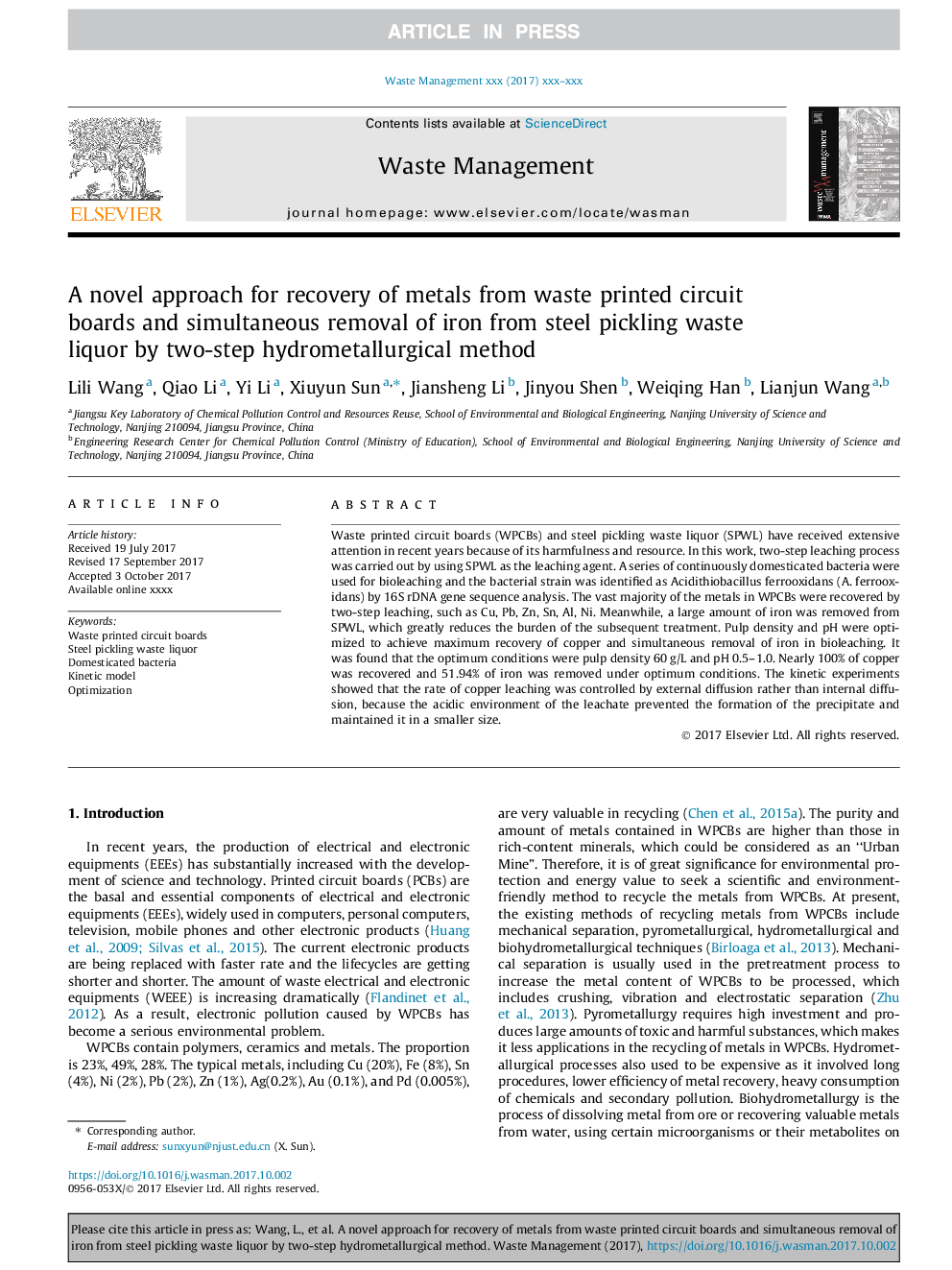| Article ID | Journal | Published Year | Pages | File Type |
|---|---|---|---|---|
| 8870273 | Waste Management | 2018 | 9 Pages |
Abstract
Waste printed circuit boards (WPCBs) and steel pickling waste liquor (SPWL) have received extensive attention in recent years because of its harmfulness and resource. In this work, two-step leaching process was carried out by using SPWL as the leaching agent. A series of continuously domesticated bacteria were used for bioleaching and the bacterial strain was identified as Acidithiobacillus ferrooxidans (A. ferrooxidans) by 16S rDNA gene sequence analysis. The vast majority of the metals in WPCBs were recovered by two-step leaching, such as Cu, Pb, Zn, Sn, Al, Ni. Meanwhile, a large amount of iron was removed from SPWL, which greatly reduces the burden of the subsequent treatment. Pulp density and pH were optimized to achieve maximum recovery of copper and simultaneous removal of iron in bioleaching. It was found that the optimum conditions were pulp density 60â¯g/L and pH 0.5-1.0. Nearly 100% of copper was recovered and 51.94% of iron was removed under optimum conditions. The kinetic experiments showed that the rate of copper leaching was controlled by external diffusion rather than internal diffusion, because the acidic environment of the leachate prevented the formation of the precipitate and maintained it in a smaller size.
Related Topics
Physical Sciences and Engineering
Earth and Planetary Sciences
Geotechnical Engineering and Engineering Geology
Authors
Lili Wang, Qiao Li, Yi Li, Xiuyun Sun, Jiansheng Li, Jinyou Shen, Weiqing Han, Lianjun Wang,
